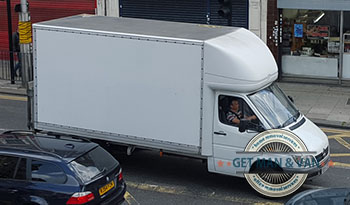
Moving heavy boxes and bulky furniture is a part of every relocation. To ensure a smooth process, it’s essential to familiarize yourself with kinetic lifting techniques, which are designed to make lifting heavy objects more manageable and safer. The process comes with an increased risk of injury, and it is something you’d wish to avoid. Injuries from lifting objects of substantial weight are unpleasant and can have long-term effects on your health. Fortunately, if you use kinetic lifting and are careful, you will surely be able to move and load your boxes without hassle or strain on your body due to the heavy lifting.
What Is Kinetic Lifting of Heavy Objects
Kinetic lifting is one of the manual handling techniques that enable you to safely lift heavy objects without the risk of injury or strain. Proper lifting practices, integral to kinetic lifting, ensure that you handle heavy objects with minimum risk and maximum efficiency. It combines a good grip and makes use of good posture guaranteeing the reduction of the significant risk that comes with bearing the full weight of bulky objects and avoid twisting of muscles and joints. Some of the most common injuries that occur due to lifting heavy items include muscle strains, injuries of the back and elbows, knees, and even spinal damage. The manual handling techniques and kinetic lifting in particular help you mitigate the risk of those. There are a few vital steps that form the technique and ensure success.
A Good Assessment of the Situation and the Objects To Lift
Start by taking a good look at the goods that you will be lifting using the kinetic lifting techniques. Remember, assessing the weight and size of the heavy object is crucial for determining if additional help or equipment is needed. Assess whether you really have the physical strength necessary for manually handling these objects, or you would better resort to the help of tools and machinery to help you bring the objects close to and load them on the van and then unload them once they are transported. When it comes to manual handling of heavy objects, having a realistic assessment of your abilities and knowing your limitations is of utmost importance when you use kinetic lifting.
Clear the Route
Before you start lifting the objects, go through the rooms, hallways, and staircases that you will move them through first with free hands. Keeping the object close while moving ensures better stability and reduces the risk of accidents. Make sure that the route is clear and that there are no obstacles on the road that will make your job harder or even put you at risk. It is better to spare a little time to clear the way now than later when you have already started kinetic lifting, or even worse – to risk losing even more time by having to make a trip to the emergency room.
The Correct Position is the Key to Manual Handling Heavy Objects
The right body posture is the foundation of kinetic lifting. Standing with your feet at shoulder width apart is a fundamental aspect of maintaining proper form while lifting. Make sure that your feet are a shoulder’s width apart. Move one foot just slightly in front of the other and make sure to stand on the long side of bulky objects such as sofas or tables.
Make sure to wear gloves and keep a stable position throughout the process. Don’t bend at the waist, but rather bend your knees to a squatting position with your abs tight. Use a good grip to grab the item you will be moving with the kinetic lifting technique, with each of your hands on the opposite sides of the heavy item. If the item isn’t that heavy, feel free to gently slide your hands underneath it. Keep bending at the knees until the object is lifted to avoid injury and keep the load close to your body. You can now proceed to lift the object and transition to a standing position by straightening your knees. Refrain from sudden movements and twists to avoid an injury to your joints or spine.
Move The Object by Using Kinetic Lifting
Now that the item is firmly in your hands and you are standing, you can carry it to the place you want it – the other room or the van waiting outside. When moving after lifting heavy objects, remember to take small steps and keep the heavy object close to your body for better balance and control. Move smoothly and slowly with small steps on the route you inspected and cleared earlier. At any point that you feel you may drop the object due to problems with the grip or its weight, make sure to stop and gently place it on the ground. You can always proceed after you catch your breath, using the fundamental kinetic lifting techniques.

Place the Item in the Desired Place
When you reach the destination, don’t rush to drop the item on the ground. Use the same kinetic lifting movements you used to pick it up, but this time in reserve. This approach ensures you safely lift and place the item without straining your body. That will guarantee a smooth transition free of injury, and you won’t risk damaging the item either.
If you do not feel skilled enough – hire professionals
Remember that if you don’t feel confident you will manage lifting all the objects even by using kinetic lifting techniques, you can always call the professionals from your local man and van in London to help you with the job. They have perfected the techniques and will be able to help you at any time.
About the Author:
Prev: « Council tax when moving house – update your billNext: DIY Tips for how to pack glasses and plates for moving »









